Who does not like leather; Who does not want the distinction that leather gives you!
The elegance of leather products when used to make clothing, accessories or home decor is unparalleled. Nothing to say about the durability of Leather; With age, leather gets better looking – wish I could say that about myself.
Not many know what leather really is ? and consequentially How to recognize good leather from the fake.
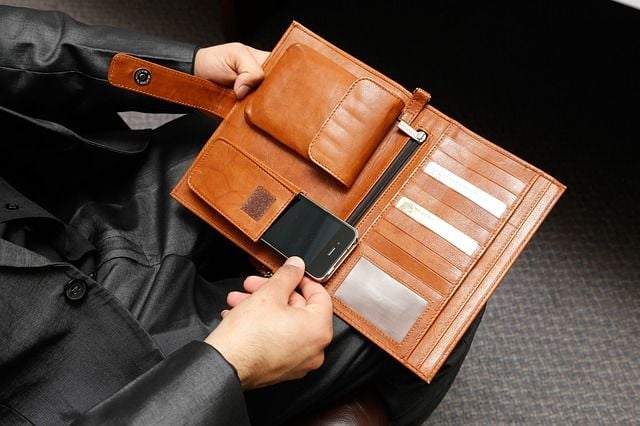
What is leather? What is it made of ?
- What is leather? What is it made of ?
- What are the different types of leather
- Classification of leather by where it is taken from.
- Leather from other mammals
- Leather from Reptiles
- Classification of leather by its type
- Full grain leather
- Top grain leather / Corrected Grain Leather
- Genuine leather
- Split leather
- Bonded leather
- Classification of leather by its purpose
- Upholstery Leather
- Strap leather
- Chamois leather
- Saddle leather
- Lining leather
- Classification of leather by the process of tanning
- Vegetable Brain Tanned Leather
- Chrome tanned leather
- Brain tanned leather
- Synthetic Tanned Leather
- Classification of leather based on the treatments on its surface
- Aniline leather (Unfinished leather)
- Nubuck leather
- Semi Aniline leather
- Pigmented leather
- Bicast Leather
- Nappa Leather
- Classification of leather, based on the surface look
- Suede
- Antiqued Leather
- Glazed Leather
- Pearlised leather
- Patent finished leather
- Embossed leather
Basically leather is the skin of animals after it is treated to many processes that refine it and beautify it. The skin is tanned with high grade oils and preservatives before it is stitched to make the things you like.
What are the different types of leather
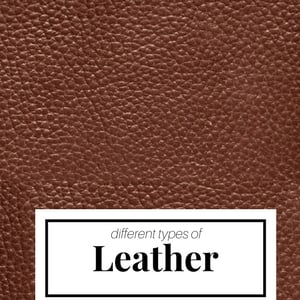
There are many different types of leather which really confuses me when I go to buy. I am the kind who ask why, what, when of things I buy – this way I have come to know a little bit about different leather products
You have to first know that the three things which decide the quality of leather you buy are
- Tanning process
- Type of hide
- Location of the cut
- The thickness of the leather.
Classification of leather by where it is taken from.
Other than cows, the skin of lambs, goats, horses, pigs, sheep, deer, kangaroos, snakes, alligators and even elephants are used to make leather products. Cow, Lamb, calf, and goatskin are the most used in the leather industry. You may have heard of different names like calfskin, reptile, lambskin, kip etc. Here are the explanations for the most popular.
Leather from Cow hide
This is the most popularly used leather – and the leather made from an adult cow is the most used. It is quite thick but at the same time soft and somewhat abrasion resistant too. This is known generally as Cowhide (hide taken from a fully grown cow, a mature female bovine that has produced a calf.). This is also used extensively to make a number of leather products.
A calfskin leather is made from the hide of young cattle. It is soft, smooth and is very much in demand for making high quality expensive leather accessories; Kip leather is a lightweight leather from cow hide, from a calf who is older than the one for calf leather (6-12 months old). The leather is fine and supple but not as much as calf leather. Steerhide leather is from a male cow (Steer); it is a very strong durable leather. In shops you will see cow hide leather labeled as steerhide when it has a finish irrespective of gender.
If you are new to sewing with leather it is better to start with cow skin (calfskin) or lambskin.
Leather from other mammals
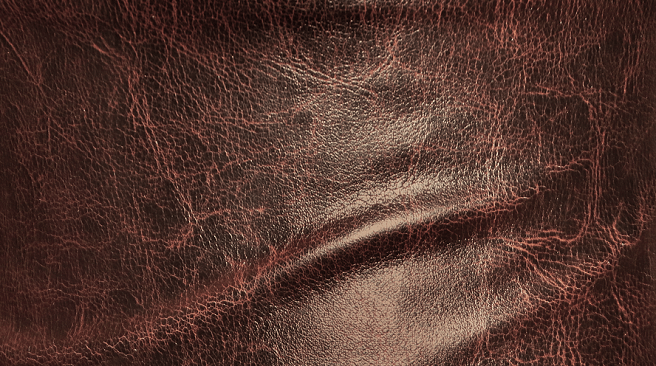
Deer skin is the most toughest leather among the leather taken from mammals. It is very durable and at the same time soft and lightweight and also stretchy. It is also very expensive to buy.
Hide taken from sheep and lamb give you a grained and fine leather – it is collectively called lambskin leather. This leather is quite supple and lightweight. It is used to make things which mold to a shape like gloves and fitting garments.
Elk leather resembles deerskin leather. Leather made from the skins of pigs or hogs is called Pigskin.
Buffalo hide is stiffer than cowhide and has deep grains and patterns. It is a very durable leather, much more than cowhide. So making shoes and other rough-use things with this hide makes sense.
Goat skin is another popular leather type because it is pretty inexpensive. It is supple as well as durable. Cordovan Leather is a highly rated, hugely popular goat skin leather used to make high-end shoes.
Leather from Reptiles
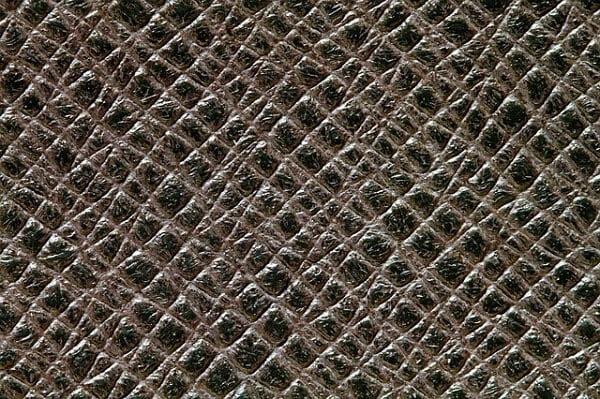
Hide taken from crocodiles, snakes, turtles, and lizards (even some endangered species) are all used to make leather, and they all say “sophistication and exoticism” and exclusivity. They have distinctive patterns of the animal’s scaled skin.
Dog skin is also rumored to be used, which is a dirty secret you and I know, but no one else does (other than the readers of this article in the guardian)
Classification of leather by its type
Usually, leather is split into two or more layers for commercial use. The top layer, containing the natural grain, is called the top grain. All other layers are splits..
Full grain leather
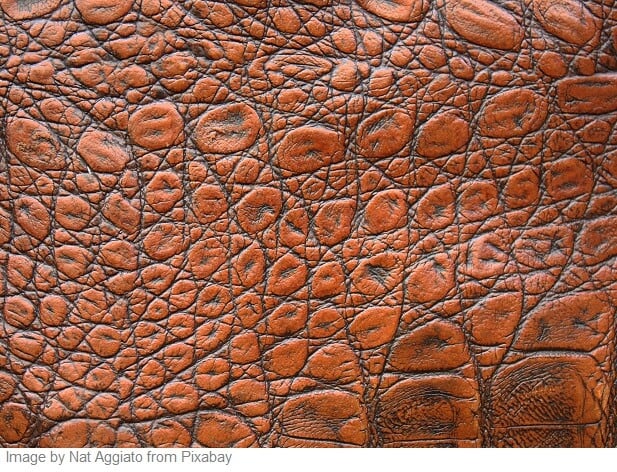
Full-grain leather is the best quality leather and the most expensive. Full-grain leather comes from the outermost portion of the animal’s hide after the hair has been removed – natural imperfections or hide marks are left as they are to become a part of the leather. This leather is not used for upholstery purposes because of this.
You can be sure that this leather will last a long time and will get better looking as it ages.
Get this leather if you can afford it, but it comes with a heavy price tag.
This leather is given surface treatments (as mentioned below) to prevent stains and make it possible to use.
Top grain leather / Corrected Grain Leather
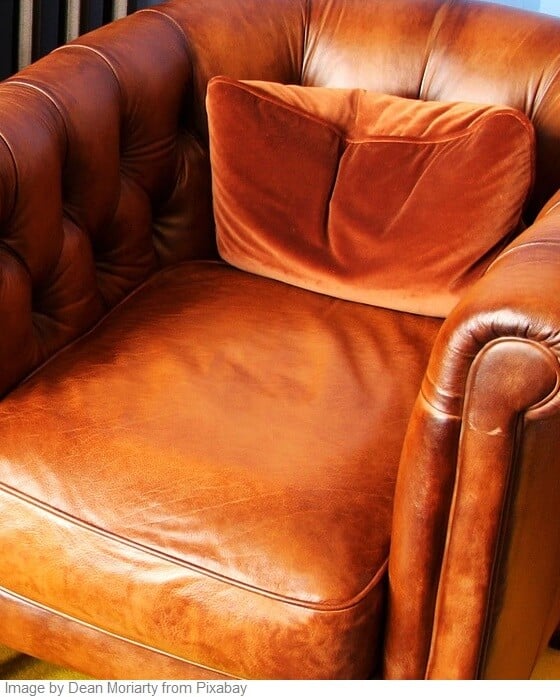
The corrected-grain leather has an artificial grain applied to its surface after it is sanded to remove the top-level natural imperfections of real animal skin and prepared. It is as real as full-grain leather, with just a little makeup. Some may consider this inferior to the full-grain one, but it is good enough for many of your uses.
It is most in demand for upholstery. It is the second-best choice after full-grain leather for most other projects. It can be made from cow skin or buffalo skin. Cow skin is more supple and more expensive than buffalo skin.
Genuine leather
One would have thought that genuine leather is genuine; I thought that – but it seems like it is not.
Genuine leather is below in quality to full-grain leather; In fact, the color is usually achieved by spray painting the surface of the leather, but to an uneducated eye, it looks quite a high grade and the original leather.
This third-grade leather is often passed off as real high-grade leather. But the buyer would soon learn after it ages and looks worn and not so good, unlike the leather, which is high grade.
Split leather
Split leather is leather split from the skin of the hide – it may be the middle and bottom layer of the epidermis.
As such, this is a very fragile leather, very weak and has many cracks, and cannot be used to make any usable and durable items. But the many leather treatments it undergoes make it durable and attractive (like the finished split, a coated split, or a suede split).
The advantage of this leather is that it is cheaper than full-grain leather (Some countries have laws that forbid it to be marked as fine leather, so look out). It is usually used for furniture/upholstery making.
Bonded leather
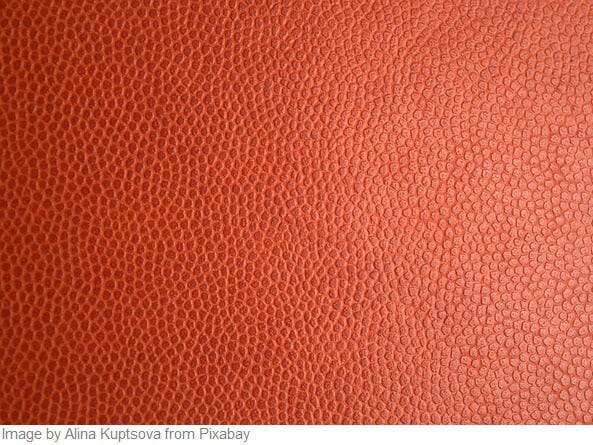
As the name suggests, this is bonded together leather. Also called regenerated leather, it is much in demand in the furniture segment.
Scrap pieces of unusable leather are made into a paste that is glued together to make a leather-like product – basically, when you think about it, it is leather – but not really. This is not what you want if you are in the market for good genuine, authentic leather. But it has the looks of leather, and it is inexpensive, so many prefer it for furniture accessories, etc.
For a layperson, knowing the difference between good and bonded leather isn’t easy. You can tell the difference only once you have used it – obviously, the leather product will far outweigh the bonded leather product. Another fact is that bonded leather starts to look worn and ugly after some use, unlike the real stuff. So you will know soon.
So if you find the leather product you bought, believing it to be the best, is starting to look quite ugly, you can be certain that it is bonded leather..
Classification of leather by its purpose
Upholstery Leather
Leather used for making upholstery – this is usually cowhide leather.
Strap leather
Heavyweight vegetable-tanned leather used for making straps and upholstery.
Chamois leather
Chamois leather is a soft and flexible leather made from sheep hides or lambskin.
Saddle leather
Saddle leather is a vegetable-tanned flexible cattle hide leather with a natural tan shade. It is usually used for making harnesses and saddles.
Lining leather
Different varieties of leather (sheep, lamb, goat, kip etc) used for lining bags, holsters, etc.
Classification of leather by the process of tanning
Rawhide is leather that is not tanned. As per the process of tanning, the leather is classified as
- Vegetable tanned leather
- Brain tanned leather
- Chrome-tanned leather and
- Synthetic-tanned leather.
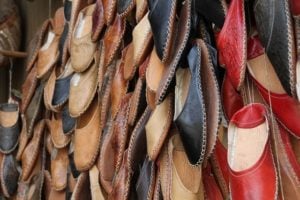
Vegetable Brain Tanned Leather
This leather undergoes a traditional treatment with extracts of vegetables, fruits, and other plant extracts. It is very soft and flexible as well as strong. It is not water-resistant and gets damaged if exposed to water.
This leather is considered to be of top quality. So if you get a chance, buy this one. It is costly, though.
It is also called Oak tanned leather when oak bark is used for tanning.
Chrome tanned leather
This leather undergoes tanning using chemicals. This is what you would choose for a home decor project like covering your sofa or car seats.
Brain tanned leather
This is called so because it uses extracts from the brains of dead animals for tanning. The process makes the leather very soft and washable.
Synthetic Tanned Leather
This leather undergoes a process that uses aromatic polymers.
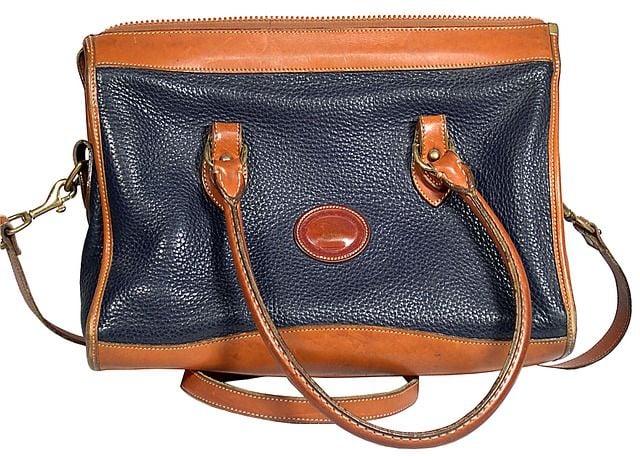
Classification of leather based on the treatments on its surface
Aniline leather (Unfinished leather)
This is leather that retains the natural grains of the original – it is dyed with soluble dyes that are clear and transparent. You can see leather in its natural state – no opaque topcoat of paints. This is the softest of all leathers and the most comfortable and very supple.
Sometimes Aniline leather will come with the extra top treatment of oil and/or wax effects.
It absorbs water and anything easily, and it is very difficult to remove stains from this kind of leather. Try using your nails on it if you dare – you will leave a mark.
An aniline leather that is just tanned (no treatment whatsoever) is called the Crust leather.
Nubuck leather
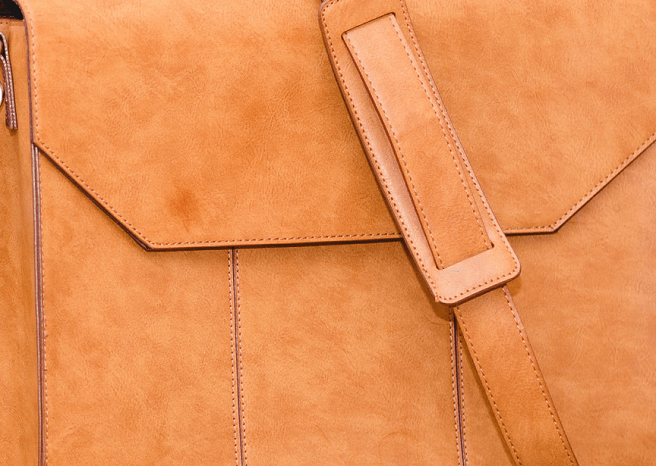
Aniline leather with a brushed or buffed surface is called Nubuck / buffed or stonewashed leather. The texture of this leather is almost like velvet or like the surface of a billiard table. This leather is very soft and very fragile. It can get damaged by water spillage.
Semi Aniline leather
Semi-Aniline leather is leather with a light coat of paint over it. This extra coat prevents stains without compromising the natural grains. Because of this, it does not absorb water easily. This leather is also soft, though not as soft as Aniline leather.
Pigmented leather
Pigmented leather is usually chrome-tanned leather buffed and then given a heavy topcoat that masks the whole grain of the leather. Also called Pigment coated /protected leather.
It is not soft, but because of the heavy layer of paint, it is the most durable. The top surface is sanded to remove imperfections, and artificial grain marks are added and painted. This means – No water /stain absorption, scratch marks, or fading.
Sometimes two coats of dyes are applied on the surface of the leather and then rubbed off to create an attractive rub-off leather. This leather is used to make shoes.
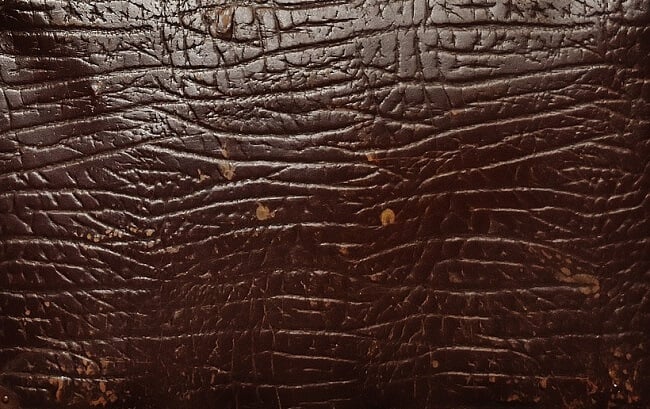
Bicast Leather
Bicast leather has a laminated surface and looks shiny (read plastic looking). This is leather with a very thin plastic-like coating on top of it; this is done to make it stronger and hard-wearing.
This lamination is usually done on a very thin leather (split leather). This leather is good for constant and heavy use, as maintaining this one is easy because of the protective surface( Polyurethane). But it does not have the look of genuine leather.
This leather is in high demand for home decor projects because of the sheen on the surface. But when it comes to making clothing like jackets or even bags and other accessories, you may not think it suitable or desirable.
Nappa Leather
This is very soft leather made from unsplit sheep/lambskin/kid skin. It is a much-in-demand leather for making clothes, and gloves.
Classification of leather, based on the surface look
Suede
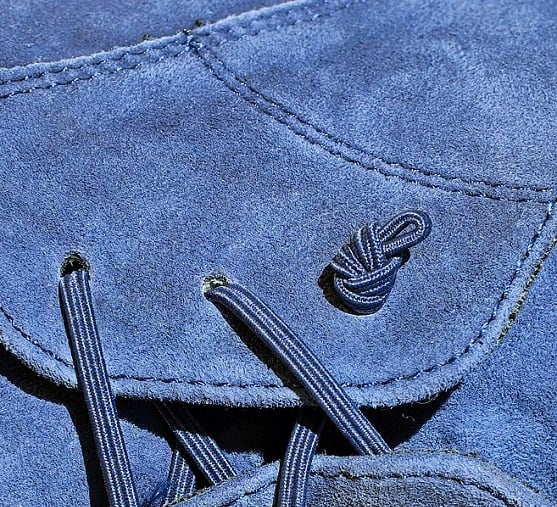
Suede is a material made from the underside of sheep or other animals like a goat. The flesh side of the (split hide) material is thoroughly sanded to get a soft velvety texture. The result is a material that is beautifully soft with a nap and is very durable. It is a favorite for making shoes.
Read more about suede leather here.
Antiqued Leather
These are leather treated in different ways to get a beautiful texture. In hand-rubbed antiqued leather, there is a mellowed look with lots of crushing and shrinking – to develop that special patina you get with usage.
Pull-up leather has a silky wax topcoat that stretches, giving it an antiquated look.
Glazed Leather
In glazed leather, a polished look is achieved. Patent leather is leather with a high gloss finish.
Pearlised leather
This leather has a pearl-like luster.
Patent finished leather
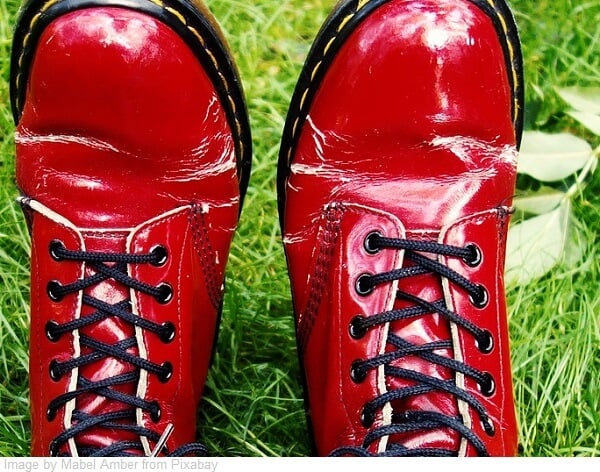
This type of leather has a plasticky enamel-type treatment done on its surface.
Embossed leather
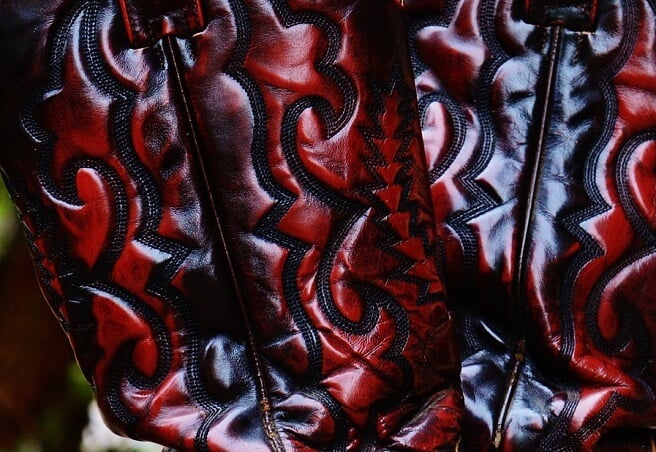
In this leather, patterns are made on the surface. Sometimes grain pattern of other leather, like that of a crocodile, is made on other inexpensive leather surfaces. This is called grain embossed leather.
Check out a related post on How to buy leather – 15 questions to ask; properly caring for leather – 10 FAQ answered ; Sewing with Leather on a sewing machine – tips ; How to hand sew leather; 30 tools and supplies needed to hand sew leather
References : http://www.hancockandmoore.com/resources/HM_LeatherGlossary.pdf ; http://www.leathersmithe.com/leather-terms.html
Related post

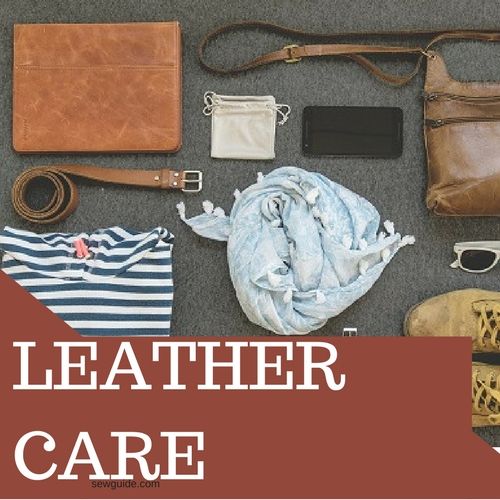
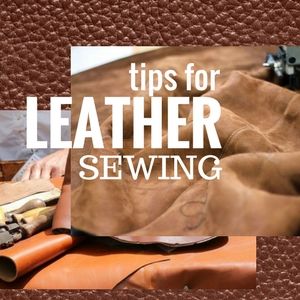
Sarina, Have any info on leathers from horse, seals or walrus? I’ve been buying 1920s leather items and bought several marked seal.
I am afraid I do not have any first hand experience . I have read that seal skin is “dense, shiny and durable” and very rare today.In the book Handbook for Shoe and Leather Processing this is written ” When properly tanned they are considered to produce a leather of greater strength, in proportion to their weight, than any other kind of leather. Seal skins are commonly made into black enameled leather for ladies’ shoes, boots, etc.” Hope this helps.
The post is very explicit even if someone is new to this they can understand it with no need of a clarification
Your website contents are very useful to us. Thanks.
True leather quality is much more nuanced than that…yes when the price is low and there’s no further info on the piece, it’s a good bet “genuine” isn’t a sign of quality and it is 100% NOT a type of leather. It just means real, nothing more nothing less.
The description usually given in “grades of leather” articles on blogs for “genuine leather” describes a kind of leather called a finished split, basically cheap suede with a coating to make it look smooth. But, were you to call up a tannery, you couldn’t ask to buy “genuine leather” and expect them to know what you wanted.
These “leather grades” or types are not grades in the same sense as that USDA Beef, Gasoline, lumber, diamonds or anything else that is “officially graded” Not hierarchy where one type is always better than the next.
The differences in cost have a lot more to do with the tannery, animal and country it’s made in than those terms. Less than 10% difference in cost for full grain vs corrected grain from the same tannery.
I work for a leather goods company in the USA that my dad started in 1969 and we’ve spent millions on leather over the years from some of the best tanneries in the world. The way the internet presents “leather quality” is misleading and not as cut and dry as it’s presented.
wonderful site,explained in detail about different types of leathers and their source,way of making,properties —Hattsoff
THIS IS SUCH AN AMAZING CONTENT . VERY HELPFUL AND KNOWLEDGABLE
I learn a lot thanks
dear sir i see leather have different leather i can type different leathers i have confused
Thank you for this important information